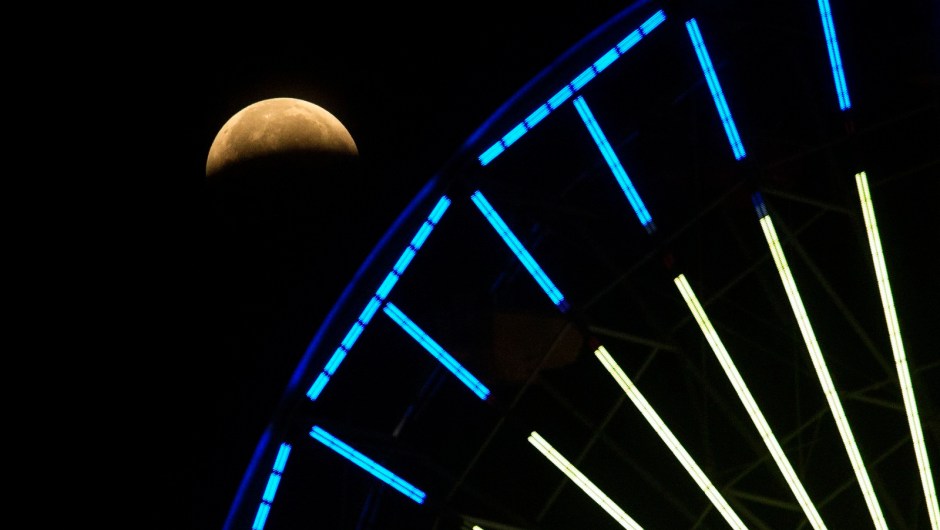Spectacular shower of shooting stars arrives in August 0:36
(CNN) -
The annual show of the meteor shower Perseids will
reach its peak in the last hours of the August 11, 2021.
With the early setting of the crescent Moon, the skies will be dark enough - at midnight (local time) on August 11 - to observe the most meteors, according to NASA.
Although it is not a full moon, more than 40 meteors per hour can be seen in the northern hemisphere.
And hopefully clear skies will allow the best viewing of these glowing meteorites and fireballs.
For their part, viewers in the southern hemisphere will see fewer Perseids, and those living below the south 30 parallel will not be able to see any, according to NASA.
Space Calendar August 2021: Perseid Meteor Shower, Blue Moon, and a SpaceX Launch
The meteor shower will also be visible on August 12 and 13, according to the American Meteor Society.
Shocking meteor shower lights up Bosnian sky 0:52
What are the Perseids?
For 2,000 years, the Perseids have put on a scintillating spectacle, according to NASA.
Comet Swift-Tuttle orbits the Sun once every 133 years, so each August, Earth passes through the comet's debris field.
Ice and dust, accumulated over a thousand years, burn up in our atmosphere to create the meteor shower.
The Perseids show brighter meteorites than any other annual meteor shower.
advertising
Meteorite, meteor, meteoroid, asteroid, comet - what's the difference?
Meteors can be traced back to the constellation Perseus, from which they get their name.
From our perspective, all meteors appear to come from a single point called "radiant", but that is because they are moving in parallel with each other.
When the "radiant" is highest in the sky, we will see the most meteors.
But "Earthgrazer" meteors, which skim Earth's atmosphere and display long, fiery tails, are visible earlier, when the radiant is low above the horizon.
The meteors themselves travel at 212,000 kilometers per hour, creating their vivid rays of light.
They can reach between 1,600 and 5,500 degrees Celsius during that rain.
The comet itself will come extremely close to Earth in 2126.
1 of 13
|
The moon is seen near the Indonesian island of Bali during Wednesday's total lunar eclipse.
Sonny Tumbelaka / AFP / Getty Images
2 of 13
|
The lunar eclipse is seen behind a Ferris wheel in Santa Monica, California.
Ringo HW Chiu / AP
3 of 13
|
People gather to see the moon in Hong Kong.
Paul Yeung / Bloomberg / Getty Images
4 of 13
|
The eclipse is observed from the Nagaon district in India.
Anuwar Ali Hazarika / Barcroft Media / Getty Images
5 of 13
|
The moon hovers behind the Statue of Liberty before sunrise in New York.
Gary Hershorn / Corbis News / Getty Images
6 of 13
|
The moon rises over the Makapuu Lighthouse in Honolulu.
Marco Garcia / Reuters
7 of 13
|
The moon is seen partially covered by buildings in Brasilia, Brazil, at the beginning of the lunar eclipse on Wednesday.
Eraldo Peres / AP
8 of 13
|
The moon rises over Victoria Harbor in Hong Kong.
Kin Cheung / AP
9 of 13
|
The partial eclipse moon sets over West Palm Beach, Florida.
Lannis Waters // palmbeachpost.com / USA Today Network / Reuters
10 of 13
|
The moon sets over Stonehenge in Amesbury, England.
Finnbarr Webster / Getty Images
11 of 13
|
People watch the moon rise over Sydney's Bondi Beach.
Steven Saphore / Anadolu Agency / Getty Images
12 of 13
|
Birds fly in front of the moon in Ankara, Turkey.
Dogukan Keskinkilic / Anadolu Agency / Getty Images
13 of 13
|
An airplane passes in front of the moon during the lunar eclipse in Shenyang, China.
VCG / Getty Images
How to observe the meteor shower
NASA scientists reported that although the shower can be seen anytime after 12:00 am (local time), the best time to detect a burst of meteors will be during the darkest part of the night, at the first hours before sunrise, between 02:00 am (local time) and sunrise.
People in the United States will be able to see about 40 Perseids per hour just before sunrise.
This is about a meteor every two minutes, assuming you are away from city lights and suburbs.
Meteorites, moons, eclipses and other celestial events in 2021
Patience is the key.
"Allow your eyes to adjust to the dark (takes about 30 minutes), that way you will see more meteors. Also, try to stay away from the phone as looking at devices with bright screens will negatively affect your night vision and consequently, it will reduce the number of meteors you see! "says NASA.
Meteorites can appear anywhere in the sky, but they look brighter against the darker sky.
Some meteorites are just faint, fast streaks.
Others are brighter and may appear to sail across our sky for several seconds, leaving a glowing smoke trail.
The best way to see the meteor shower is to sit in a reclining chair or lie on your back and gaze up at the sky with a wide view.
You don't need special equipment, but if you want the best view, it's best to be as far away from artificial light as possible.
If you live in an urban area, you may want to drive to avoid city lights, which can make the meteor shower appear faint.
NASA scientists also say that camping can triple the number of visible meteors.
And don't forget to take your camera before you go out.
Meteor showers are a great opportunity for time-lapse video and long-exposure photography as they allow your shots of the night sky to be turned into paintings of this starry spectacle just like Van Gogh's.
MeteoritePerseids

